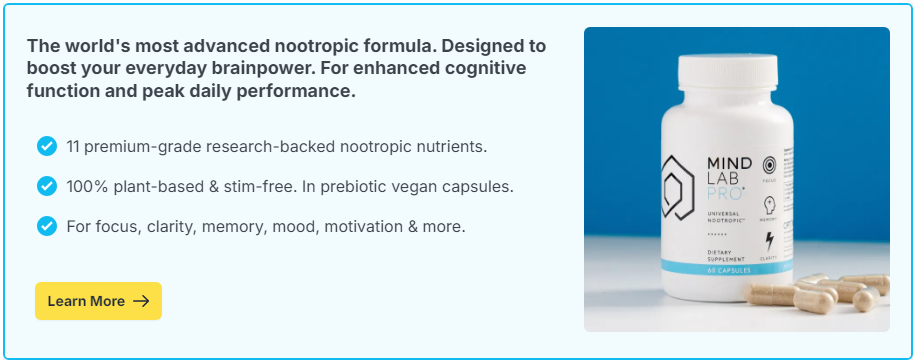
Take a look around. Whether it’s a butterfly wing, a building façade, or a beautifully set dinner table, there’s a good chance that what catches your eye is symmetrical. There’s something deeply satisfying about balance and proportion. But why?
Your brain has a built-in bias for symmetry. It finds symmetrical things easier to process, more pleasing to look at, and—perhaps most surprisingly—more trustworthy and memorable. This isn’t just about aesthetics. It’s a window into how your brain makes sense of the world, makes choices, and even judges people.
Symmetry is everywhere in nature, art, architecture, and even in how we structure ideas. And the more we understand the brain’s attraction to it, the better we can harness that bias to enhance focus, creativity, and communication.
Contents
Why Your Brain Loves Symmetry
Processing Fluency
Symmetrical patterns are easier for the brain to process. This ease is known as processing fluency. Because the brain likes efficiency, it rewards easily processed information with positive emotions. In other words, the more fluently something is processed, the more pleasant it feels.
Symmetry provides predictability. When one side mirrors the other, your brain has to do less work to interpret the whole. That mental shortcut creates a feeling of harmony and “rightness,” even if you don’t consciously notice it.
Evolutionary Advantage
From an evolutionary perspective, symmetry often signaled health and safety. Symmetrical faces and bodies were viewed as indicators of genetic fitness and physical health. Even in other species, mates are more likely to select symmetrical partners.
This innate preference may have developed because symmetry often equals stability—in both physical structures and living beings. A crooked tree might be diseased. A lopsided animal might be injured. Over time, brains evolved to seek balance as a proxy for safety.
Neural Efficiency
Brain imaging studies have shown that when people view symmetrical images, areas involved in visual processing, emotional response, and reward light up. The lateral occipital complex—a region responsible for shape recognition—responds more strongly to symmetrical stimuli, suggesting that symmetry demands less cognitive effort to identify and categorize.
Symmetry in Faces, Design, and Decision-Making
Facial Symmetry and Trust
We don’t just find symmetrical faces more attractive—we also find them more trustworthy. Research shows that even infants prefer to look at symmetrical faces, suggesting this preference is present from a very young age.
In social contexts, symmetry can influence how we assess others. A well-balanced face is often (unconsciously) linked to traits like honesty, competence, and likability. While this bias isn’t always accurate, it underscores how deep the preference runs.
Symmetry in Product and Web Design
Companies spend millions designing logos and layouts that subtly align with our preference for symmetry. Websites with symmetrical layouts are often rated as more professional, credible, and easy to use. In product design, symmetrical packaging can make items appear more premium or reliable—even if the contents are identical.
Decision-Making and Mental Models
Symmetry also plays a role in how we structure ideas. Consider the appeal of balanced arguments, pros and cons lists, or “on the one hand, on the other hand” comparisons. These formats mirror the natural tendency to seek equilibrium in thought and judgment.
People tend to favor decisions that “feel” balanced—even if the actual logic is skewed. For example, consumers might pick a product that offers a mix of pros and cons over one that’s all pros but feels too good to be true. Symmetry, even in reasoning, feels more believable.
When Symmetry Misleads
The Halo Effect
Because we associate symmetry with goodness, we sometimes overlook flaws. This is part of the halo effect—where one positive attribute (like physical symmetry) leads us to assume other unrelated positives (like intelligence or kindness).
This can bias hiring decisions, interpersonal relationships, or even criminal sentencing. It’s a reminder that while symmetry can guide our brain toward ease, it doesn’t always guide us toward truth.
Overvaluing Aesthetics
In design and architecture, symmetry can become a default, stifling innovation. Some of the most compelling art and inventions play with asymmetry to provoke thought or create tension. Relying solely on symmetrical appeal may limit creative exploration.
Decision Fatigue and Visual Clutter
When environments lack symmetry or visual balance, the brain must work harder to organize the chaos. Over time, this creates low-level cognitive stress and contributes to mental fatigue. But ironically, environments that are too symmetrical can feel sterile or uninspiring. The trick is balance—literally and metaphorically.
Using Symmetry to Enhance Focus and Mental Clarity
Organizing Your Space
Arranging objects symmetrically in your workspace—such as aligning books, spacing items evenly, or balancing your desk layout—can subtly boost your brain’s sense of order. This may increase your ability to concentrate and reduce visual stress.
Structuring Information
Presenting ideas in symmetrical formats (bulleted lists, balanced headings, mirrored comparisons) improves retention and engagement. Your brain prefers information that fits into recognizable patterns, and symmetry enhances that pattern recognition.
Practicing Symmetry in Self-Regulation
Daily habits can benefit from symmetry, too. Think about balanced routines: equal work and rest, structured mornings and wind-down evenings. Symmetry in behavior promotes rhythm, which supports cognitive regulation and emotional balance.
Nootropics for Cognitive Balance and Perceptual Clarity
Enhancing Pattern Recognition and Focus
Your brain’s love of symmetry is closely tied to pattern recognition—a skill that supports everything from creativity to problem-solving. Certain nootropics can enhance this function by improving focus, reducing distraction, and optimizing neural signaling.
Key Nootropics for Mental Order
- L-Theanine + Caffeine: Promotes calm alertness, ideal for recognizing patterns and maintaining visual focus.
- Citicoline: Supports acetylcholine levels, boosting clarity and fluid thinking—essential for design, writing, and structured reasoning.
- Bacopa Monnieri: Enhances memory and processing speed, helping your brain retain and organize visual and verbal information.
- Noopept: A fast-acting cognitive enhancer that may support associative thinking and visual memory, aiding recognition of symmetry and structure.
The nootropic stacks available through our affiliate partners combine these ingredients for balanced, focused brain performance—helping you work with your mind’s natural preferences instead of against them.
Embrace the Balance, But Question the Bias
Your brain is built to seek balance. Symmetry feels right because it reflects order, predictability, and ease. That instinct has evolutionary roots and real cognitive benefits. But it also comes with blind spots.
When you understand the brain’s preference for symmetry, you can use it to your advantage—whether you’re organizing your workspace, designing a presentation, or fine-tuning a daily routine. At the same time, it’s important to remain aware of how this preference shapes your judgment, sometimes in ways that bypass logic.
Balance is beautiful. But awareness—that’s even more powerful.

